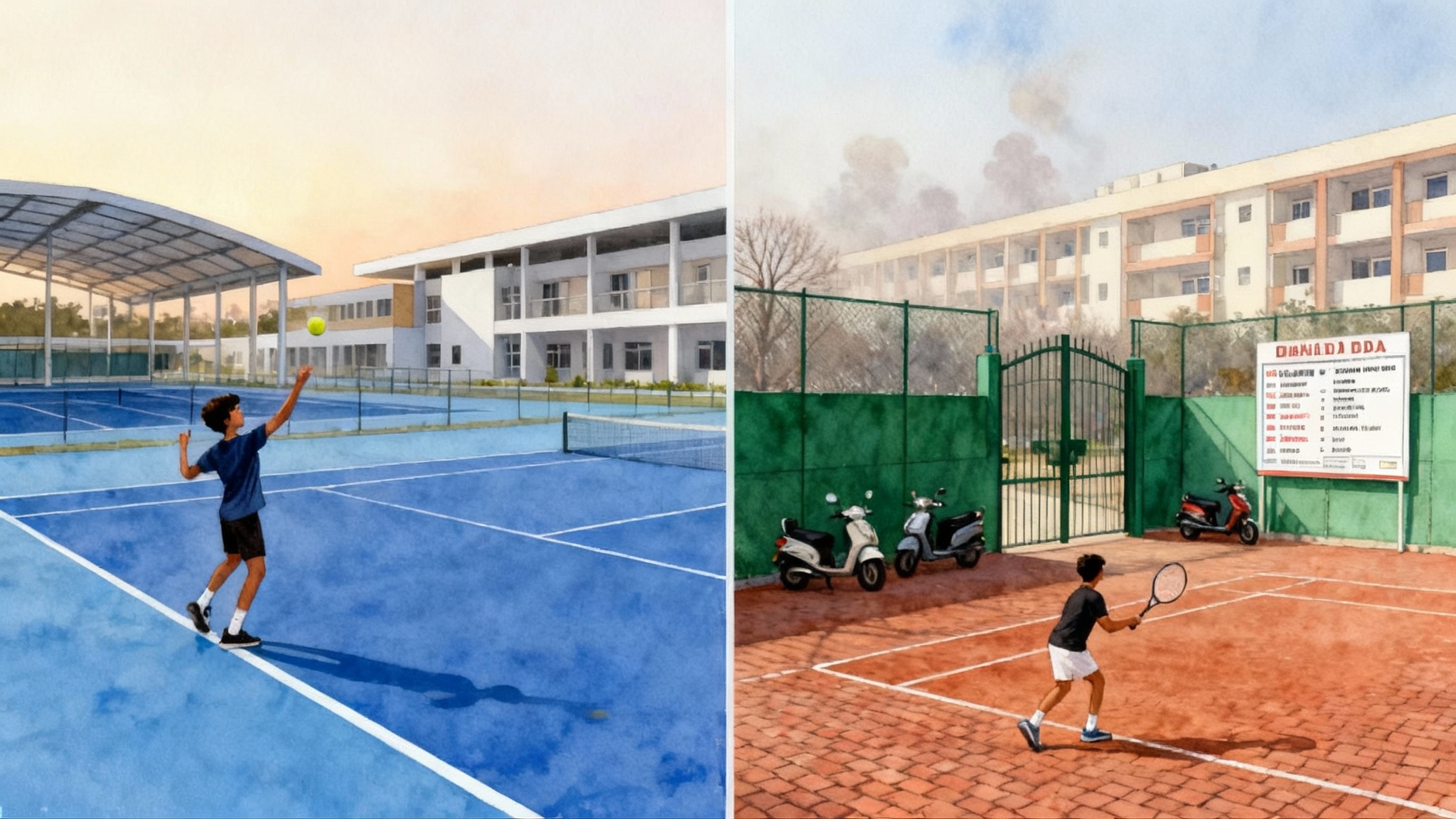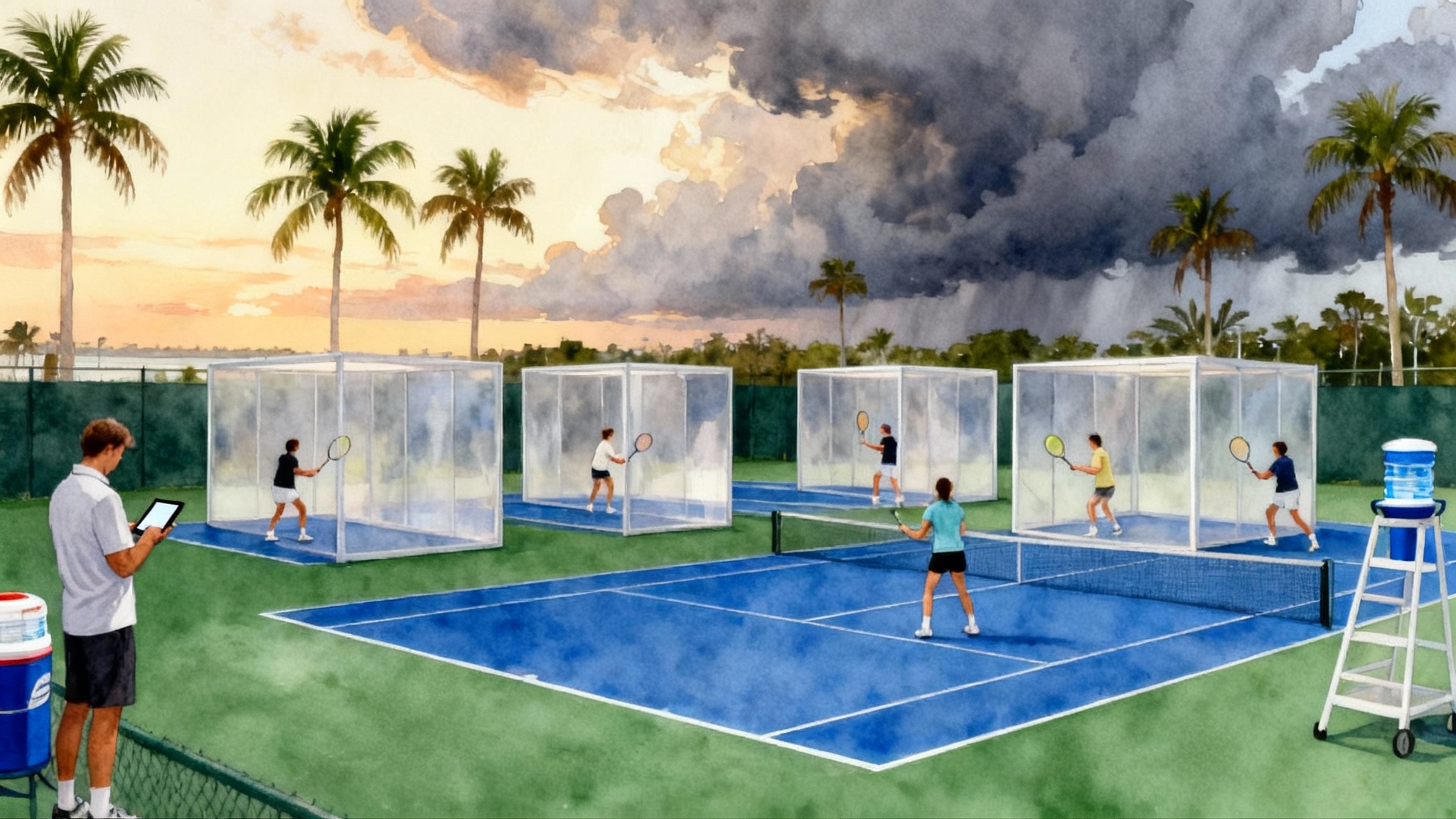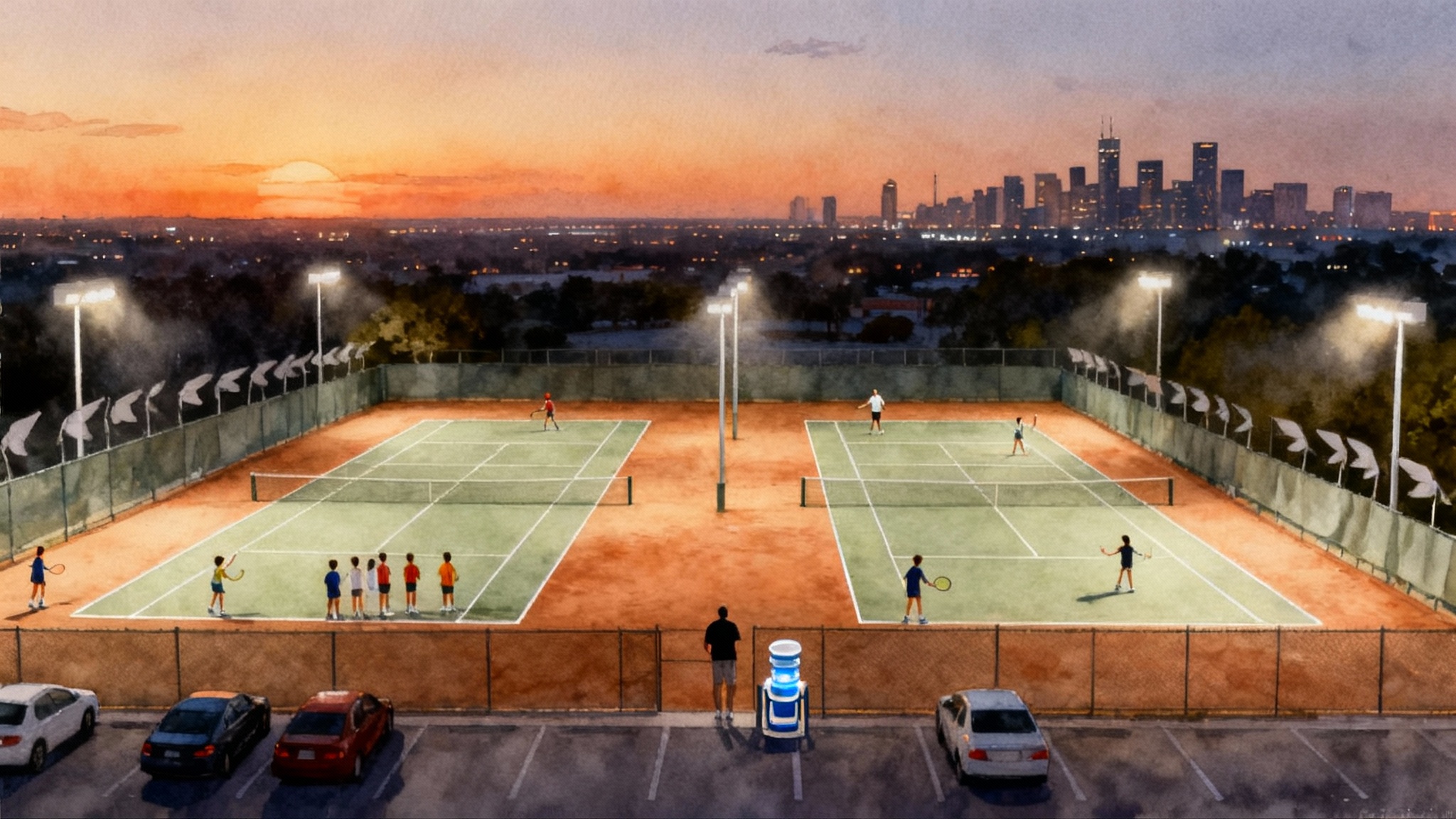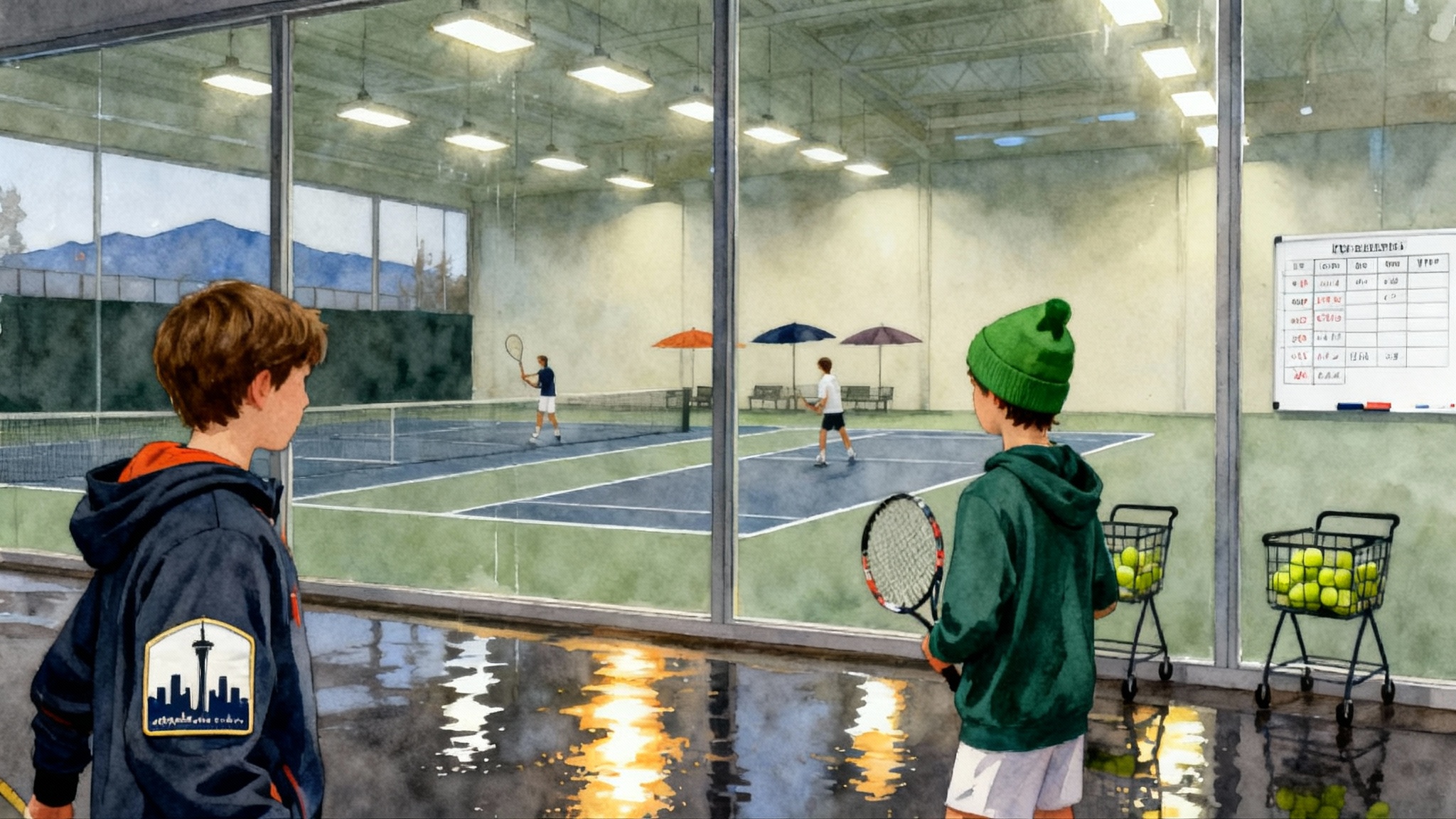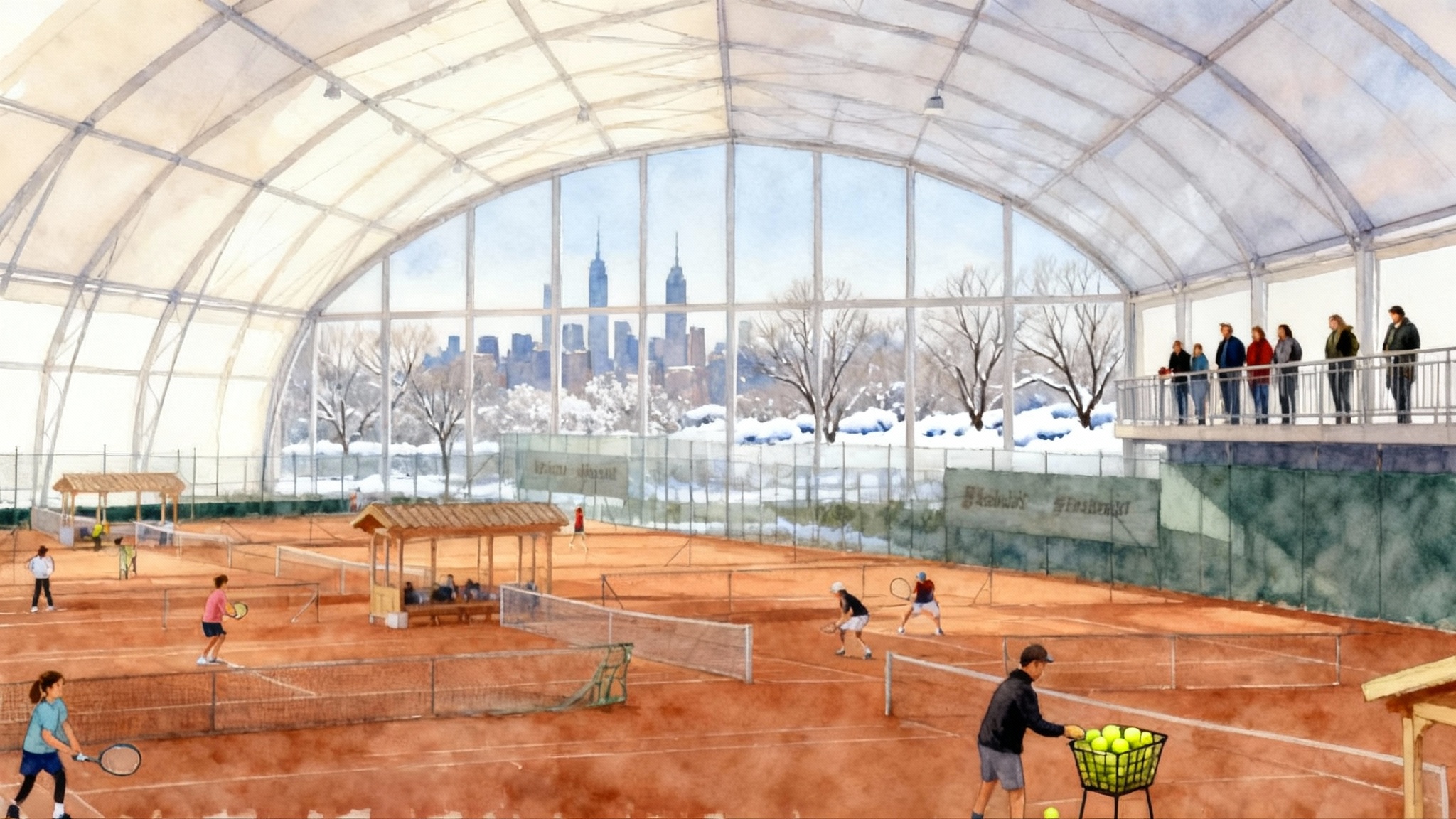Best Miami-Fort Lauderdale Tennis Academies 2025-2026
A parent-focused comparison of Miami and Fort Lauderdale tennis academies for juniors and college-bound players. Training models, clay vs. hard-court balance, monthly costs, trials, UTR and ITF pathways, and commute tactics inside.

Why South Florida is uniquely good for junior development
South Florida is tennis every month of the year. That predictability changes how you plan. Instead of cramming work into short spring or summer windows, you can build a steady twelve-month rhythm: skill blocks, competitive blocks, brief recovery, then repeat. For a motivated player, that cadence compounds like interest.
Two realities shape choices in Miami and Fort Lauderdale:
- Surfaces: Har-Tru clay is everywhere in clubs and parks, while public hard courts remain plentiful. The right blend prepares a junior for both point construction and college-level pace.
- Commute: A nine-mile drive can take 20 minutes at noon or 55 minutes at 5 p.m. The best academy on paper fails if your player arrives frazzled.
Planning out-of-state comparisons too? See our Los Angeles and Orange County academies and Gulf Coast tennis academies for context.
Training models: day vs. partial-boarding
Think of development like school electives. Day academies are your core classes during the week. Partial-boarding is an immersive lab where reps and recovery stack up fast.
- Day programs: Players live at home and train 3 to 6 days per week. Morning or after-school blocks, plus weekend match play. Best for families who want hands-on oversight and flexible academics.
- Partial-boarding: Players live in supervised housing or with vetted host families during the week, go home on weekends, and train in two daily sessions with built-in fitness, mobility, and study hall. Best for families targeting Division I scholarships or elite national rankings who cannot replicate volume at home.
How to choose: If your player’s weekly hours are below 12 and academics need predictability, day programs win. If you are chasing 18 to 22 quality on-court hours plus structured fitness and you live far from the academy, partial-boarding saves time and reduces friction.
Clay versus hard: set a surface ratio on purpose
South Florida makes it easy to tilt too far toward clay because Har-Tru keeps rallies long and joints happy. College tennis and most national hard-court events still demand competence on acrylic.
Use a seasonal surface ratio:
- Fall build (August to November): 60 to 70 percent clay for pattern training, 30 to 40 percent hard for serve plus one patterns.
- Winter competition (December to March): Match the expected tournament surface. If your player is on a hard-court swing, flip to 60 percent hard.
- Spring finals and summer: Follow event surfaces and keep at least one clay session weekly to keep the body fresh.
Signal you are getting the mix right: rally tolerance increases, but first-strike patterns do not disappear. If second serves float on hard courts, add more hard-court targets in practice immediately.
The cost reality check for 2025–2026
Numbers vary by academy, but South Florida patterns are clear. Treat costs in three buckets.
- Group training packages: $800 to $1,800 per month for 3 to 5 days per week, typically 2 to 3 hours per day. High-performance pods with smaller ratios tend to sit near the top of this range.
- Private sessions: $80 to $160 per hour for established coaches; $60 to $90 for assistant coaches or supervised hitting. Plan 2 to 4 hours per month if you are in a strong group, 6 to 8 if your player is remaking technique.
- Partial-boarding packages: $3,500 to $6,500 per month including housing, meals, transport, group training, fitness, and tournament coaching on select weekends. Add travel and entry fees for events.
Cost guardrails that prevent surprises:
- Ask for the player-to-coach ratio at peak times. A lower ratio often beats an extra hour at a high ratio.
- Clarify what is included on tournament weeks. Some programs shorten daily training when coaches travel.
- Get a written plan for off-court work: mobility, strength, and prehab reduce injury risk and missed weeks, which keeps total annual cost sane.
Trials and assessments: what a good process looks like
A worthy academy will evaluate before selling. Expect a 60 to 120-minute trial with these pieces:
- Match play snapshot: one set or a tiebreak to see how patterns hold under stress.
- Ball-striking diagnostics: rally tolerance, contact height, and spacing on both wings.
- Serve and return test: second-serve spin window, first-serve locations, and return quality.
- Movement screen: split step timing, first step, and recovery lines; a quick mobility check of ankles, hips, and thoracic spine.
- UTR verification and goals: where the rating sits now and what is a realistic six-month target.
- Parent debrief: coach explains the first 4 to 6 weeks, not a vague promise for the year.
If an assessment ends without clear next steps, treat that as a red flag.
UTR and ITF pathways from Miami–Fort Lauderdale
Florida is tournament-dense, so you can progress without burning weekends on interstate travel. Start by mapping a 12-week calendar around school, exams, and family commitments.
- Local and sectional events: Use the USTA Florida tournament search to filter by surface, age, and month. For developing juniors, 2 events per month with at least one rest weekend protects training quality. For more advanced players, aim for blocks of back-to-back events followed by a training block.
- Universal Tennis Rating events: UTR events in Broward and Miami-Dade fill fast near holidays. Register early and balance round-robin formats that guarantee matches against single-elimination draws that mimic college pressure.
- ITF Juniors: The ITF World Tennis Tour Juniors calendar includes J30 and J60 events in the region most years, and the Orange Bowl typically lands in December within driving distance. Read the ITF entry and withdrawal rules carefully. The ITF juniors overview clarifies ranking points, entry cutoffs, and hospitality policies.
Progression cue: when your player regularly wins local L6 and L5 events and holds a stable UTR against older players, start mixing in sectional championships and select ITF qualifiers without abandoning the local confidence engine.
Commute logistics: how to keep energy for the last ball
Time is not equal in South Florida. A 7:30 a.m. drive across Miami-Dade or Broward can double if a lane closes or if it rains hard. Use these habits to save time and legs:
- Choose within 20 to 30 minutes in traffic. If you are beyond that, strongly consider partial-boarding during peak blocks.
- Scout two routes and one parking plan. Shaving 8 minutes off arrival consistently is the same as adding 8 minutes of quality warm-up.
- Embrace early starts in summer. Training from 7 to 9 a.m., schoolwork at midday, and a shorter afternoon session beats one long midday grind.
- Hydration protocol in the car: an electrolyte bottle on the way, water courtside, and a small protein-carb snack for the ride home.
- Use Friday as a flexible day. If traffic explodes or a storm hits, shift the heavy session to Saturday morning rather than forcing a low-quality Friday.
Mini-reviews and program types
Below are representative profiles to help you compare by fit, not just by brand name. Exact schedules and pricing change year to year, so confirm details during your trial.
Community spotlight: Schoolyard Tennis Academy (Miami)
Program page: Schoolyard Tennis Academy.
Who it suits: committed middle school and early high school players who thrive in smaller groups and value a coach who knows their school schedule, teachers, and local park rhythms.
Training model: day program with 3 to 5 afternoon blocks plus optional Saturday match play. Private sessions are available for technique changes. The academy integrates homework time and communicates directly with parents, which smooths busy weeks.
Surface mix: mostly hard courts with weekly access to nearby clay. This balance helps new competitors learn first-strike patterns without losing clay’s value for footwork.
What stands out: community roots. Players often train with neighborhood peers, and the staff stages mini-matches that double as confidence boosters. Expect high accountability and consistent feedback chains rather than rotating coaches.
Monthly budget range: typically in the lower to mid tier for group packages, with add-on privates priced to encourage regular tune-ups instead of rare, expensive fixes.
Trial flow: phone consult, after-school evaluation, and a two-week ramp plan that parents can see on paper.
Best for families who want: a steady weekly rhythm, realistic tournament scheduling, and coaches present at local events.
High-intensity option: Saviano High Performance (Davie)
Who it suits: tournament-hardened juniors seeking a compact technical language and demanding live-ball standards. The culture rewards players who self-manage and compete with intent.
Training model: day and partial-boarding structures with two-a-day options during peak weeks. Fitness is integrated, not bolted on.
Surface mix: hard court dominant with purposeful clay days for point construction and recovery.
What stands out: clear pattern training and match-play specificity. Players learn to convert with proactive footwork, not just bigger swings.
Monthly budget range: upper tier for group work with a premium on one-to-one time.
Trial flow: technical and tactical evaluation followed by a transparent 4- to 6-week plan targeting one or two key bottlenecks.
Best for families who want: measurable gains within 90 days and exposure to peers chasing national and international schedules.
College pipeline focus: Evert Tennis Academy (Boca Raton)
Who it suits: high school players on the college track who want structured volume, college showcase events, and help with film, outreach, and scheduling.
Training model: full-day training blocks and partial-boarding with supervised study hall. College placement guidance runs year-round, not just senior spring.
Surface mix: a healthy clay-hard blend aligned with tournament windows.
What stands out: a proven college placement ecosystem and integrated strength and mobility work that keeps players available for matches.
Monthly budget range: upper tier with clear inclusions for housing, meals, and tournament coaching on select weekends.
Trial flow: multi-hour assessment, athletic testing, and a semester plan with academic alignment.
Best for families who want: support across tennis and recruiting deliverables, plus peers on the same timeline.
Technique-first boutique: Rick Macci Tennis Academy (Boca Raton)
Who it suits: players rebuilding mechanics or younger athletes in the skill acquisition phase who benefit from vivid, teachable cues and high-energy reps.
Training model: day training with focused private sessions that translate immediately into live-ball courts.
Surface mix: hard court primary, with clay used for groove work and volume days.
What stands out: a communicative approach to mechanics that parents can understand and players can repeat under pressure.
Monthly budget range: mid to upper depending on the ratio of privates to group sessions.
Trial flow: video capture, targeted drills, and a straightforward 30-day assignment list.
Best for families who want: crisp technical progress that is visible in match footage within weeks.
How to compare programs in one afternoon
Use this field checklist during your visits.
Facilities and flow
- Count balls in live-ball drills. More balls equals more learning. A hopper should be nearby and full.
- Watch transitions. Are players hustling from court to fitness, or drifting and losing 10 minutes per hour?
- Ask where match play lives in the week. If it is only on Fridays, your player might not get enough decision practice.
Coaching quality
- Pick any player and watch for two minutes. Does the coach give a cue the player can act on now? Vague praise is noise.
- Confirm who will be on your player’s court 70 percent of the time. Consistency beats a famous name that floats.
Fitness and prehab
- Look for warm-up sequences that include mobility, activation, and short accelerations. A good start buys better skill work the first 20 minutes.
- Ask how the program manages growth spurts, especially for serving and sprint volumes.
Communication and culture
- How often do you receive progress notes? Weekly micro-updates keep everyone aligned.
- Are standards clear? Early arrivals, water ready, phones away. A culture you can explain is a culture you can join.
A sample 12-week calendar for a high school player
- Weeks 1-3: technical block on second serve and backhand spacing, three group sessions plus two 45-minute privates, one clay day per week.
- Weeks 4-5: two tournaments chosen for surface and field quality; keep two group sessions on light days for rhythm.
- Week 6: recovery week with mobility focus and one match-play set midweek.
- Weeks 7-9: intensity block with added fitness and live-ball drills that force first-strike decisions.
- Weeks 10-12: one sectional event or an ITF qualifier, plus a lighter local event if the body is fresh.
The principle: bounce between focused training and competitive reality checks without letting one swallow the other.
Budgeting tips that save money without losing progress
- Buy training in blocks, not week by week. Many programs discount monthly or quarterly packages.
- Replace one private with video analysis. A 30-minute review of two sets can replace hours of guesswork.
- Share a hitting pro session with a peer for serve and return patterns. Live reps at a fair price beat a lecture.
- Schedule your rest. Avoid the temptation to add sessions in the week after a title or a heartbreak loss. Planned downshifts prevent overuse costs.
Red flags to notice early
- No written plan after the trial. If the next four weeks are not on paper, you may be buying hype.
- Endless dead-ball feeding. Live-ball decision work should dominate after mechanics stabilize.
- Fitness is an afterthought. If warm-ups begin late and cooldowns do not exist, expect soft-tissue issues in month three.
Putting it together for your player
Start from your anchor constraint. If schoolwork requires a hard stop at 6 p.m., the right academy is the one that fits that boundary without constant workarounds. Use surface ratios to keep development honest. Budget for one or two private hours a month to tune the engine. Build a 12-week calendar that your player can explain back to you. When they can teach the plan, they can execute it on a break point.
South Florida gives you a gift that most regions cannot: consistent weather, dense competition, and coaches who have seen every junior storyline. Choose for fit and friction, not just for brand. Then commit. Progress here favors families who guard sleep, fuel well, train with intent, and show up to the same court, with the same focus, week after week. That is how a local commute becomes a college letter.
